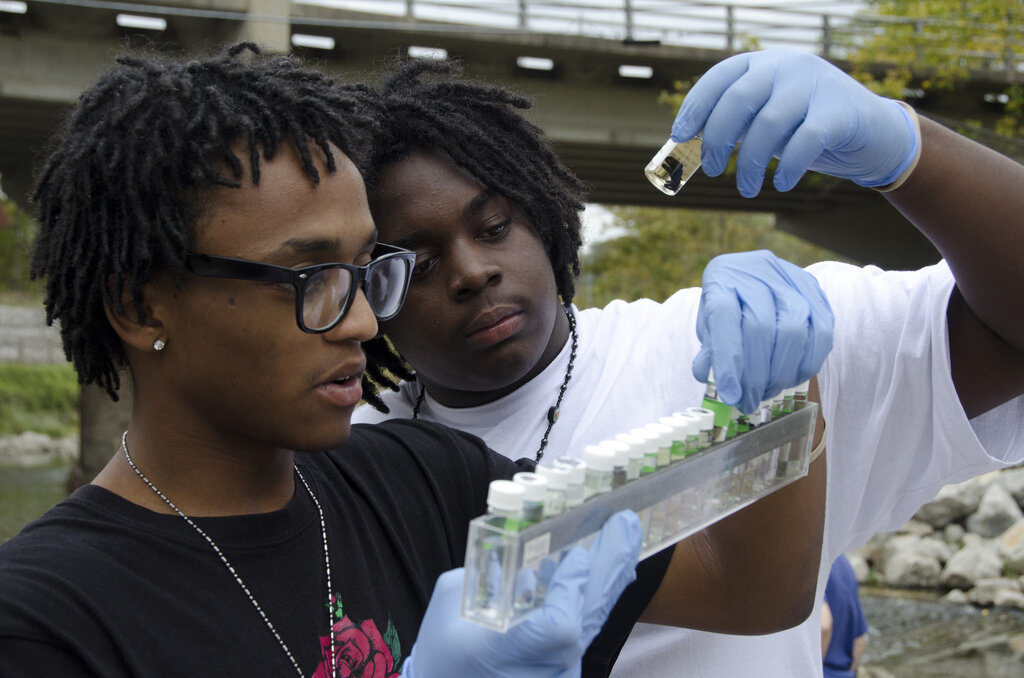Just last month, to pick a recent example, the MIT Water Club put on its latest Water Innovation Prize competition in which nine start-ups described their water-focused business plans to a panel of judges.
The competition has been held annually since 2015, and it’s helped turn some new ideas into commercial successes – one being Boston-based Watchtower Robotics, a second-place winner in 2017 that today makes small robotic devices that scout out leaks from the insides of the pipes of municipal water systems, the aim being to cut down the zillions of gallons of water that disappear each year through broken pipes in cities across the country.
In this year’s competition – which due to pandemic concerns was conducted via Zoom -- the $25,000 top prize went to a team from the UK that pitched a way to inject chlorine into small-scale water systems in economically undeveloped countries. The team uses 3-D printers to create low-cost devices that have no moving parts and that don’t need external power.
The idea was the brainchild of Francesca O’Hanlon, a British degree-holder in sustainable development who, volunteering for Engineers Without Borders in Mexico City in 2013, noticed mistakes in how rainwater was being purified for public consumption. She fashioned a rudimentary chlorine injector out of nuts and bolts that could control the application of the disinfectant.
Later, while volunteering for Doctors Without Borders in Sub-Saharan Africa, she noticed similar problems; she also saw that the costs of available tools that could deliver chlorine were well beyond what locals could afford.
That led to Blue Tap, today a non-profit that provides the injectors at the cost of $50 and that also trains local people to install and maintain the devices, initially in Uganda. “The expertise and technology stays in the community,” said O’Hanlon.
Second place and $12,500 in the MIT water innovation competition went to Floe, LLC of Boston for a new way to prevent ice dams from forming on roofs.
Many people in northern regions know first-hand what happens when melted snow and ice gets caught behind such dams – it winds up getting under shingles and dripping into building interiors.
Instead of using electric wires to melt ice dams – a conventional method that carries costs and that poses fire hazards – Floe combines a biodegradable de-icing fluid with drip-irrigation technology from the farm sector to create channels in ice dams that allow water to run off roofs.
The $7,500 third prize went to Harmony Water for a method to reduce and manage the brine byproduct of desalinization.
As noted at the top of this posting, the water innovation competition at MIT isn’t alone in inviting fresh thinking about water technology.
The federal Department of Energy recently launched a Waves to Water Prize that will award $200,000 in prizes for new ways to power desalinization plants through the use of ocean waves.
Another competition: The Urban Water Challenge by Imagine H20, a non-profit facilitator of venture capital that for the last three years has run an international competition for solutions to urban water problems. Awards are in the hundreds of thousands of dollars.
Last year’s winners included the aforementioned Watchtower Robotics, and also the maker of a system of decentralized wastewater treatment systems for colleges and schools in Mumbai, India, and also a firm that came up with a way to install and replace waterpipes using trenchless technology in Colombia.
And early this year the US Department of Energy and the Federal Bureau of Reclamation announced a Fish Protection Prize with $700,000 in awards. The competition aims to generate new ideas about how to avoid situations in which fish swim into pipes and dam intakes and become separated from their natural habitats, thereby threatening native fish populations and hurting recovery efforts for threatened and endangered fish species.
Water technology competitions aren’t just for adults.
The Stockholm Junior Water Prize, overseen by the Virginia-based Water Environment Federation, begins with high school competitions in 35 countries and ends with a fancy ceremony in Stockholm; last year’s overall winner was an 18 year-old from Australia who developed a way to measure ultra-violet light exposures that are needed in solar disinfection of drinking water.
A different high schooler competition called Clean Tech is supported by Spellman, a huge New York-based electrical technology firm.
Last year’s winners included a New Jersey student who developed an app that helps users track rain cycles – a benefit for rainwater harvesting. Another prize winner was a team from Zimbabwe that built a remotely-controlled aquaponics system that uses fish waste to fertilize plant life.
These competitions generally celebrate the importance of innovative thinking, and the range of prizes and prize-winning entries underscores the many ways human society is connected to water.
One other thing: The competitions remind us that science and engineering are in constant evolution, sometimes replacing earlier concepts and technologies that, well, weren’t all that wonderful when you think about it.
For example, we no longer turn to engineers to straighten rivers for our own convenience. We no longer use gasoline additives that ultimately contaminate local wells. We no longer run factories whose air emissions can kill downwind waters.
We are, in fact, capable of change. Not merely capable of it -- we encourage it by inviting innovative thinkers to come up with fresh ideas in such settings as science and engineering competitions.




















